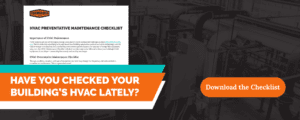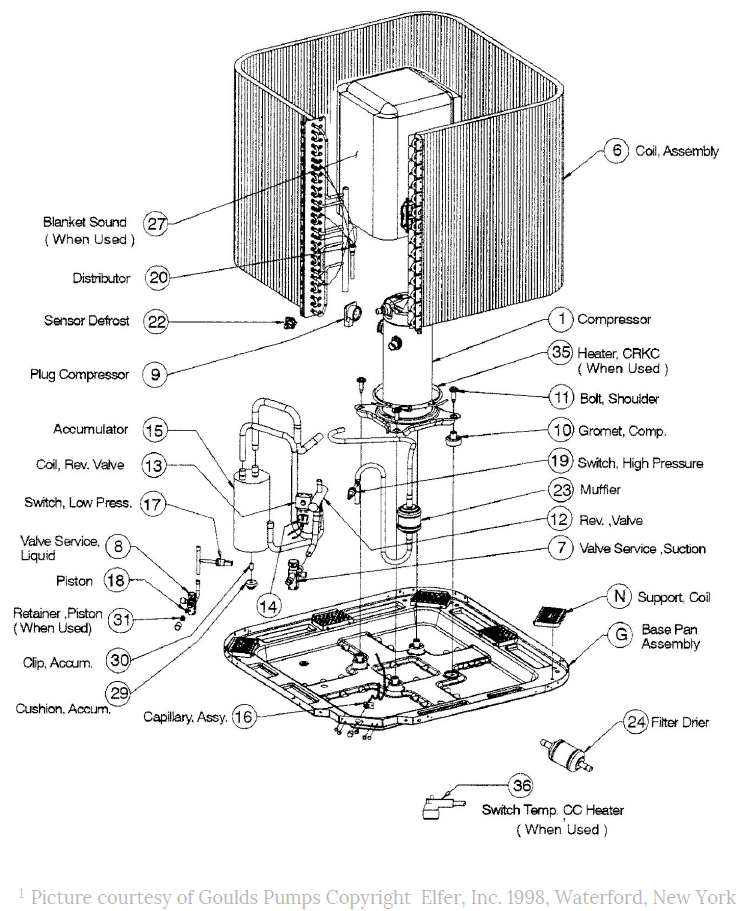A heat pump is a mechanical-compression cycle refrigeration system which operates as both a heating and cooling system. Think of a heat pump as a transporter which moves heat from place to place. In this article we break down everything you need to know about heat pump maintenance.
THE BASICS: HOW DOES A HEAT PUMP WORK?
In its most basic sense, heat pumps transfer heat by circulating refrigerant. Refrigerant undergoes evaporation and condensation during this process causing increased heat transfer. The compressor pumps refrigerant between two heat exchange coils. Refrigerant evaporated by lowering pressure which allows for heat absorption. On its way to the other coil the refrigerant compresses at a high pressure causing it to release the heat it absorbed earlier.
WHAT ARE THE MAIN PARTS OF A HEAT PUMP?
Before you can perform regular maintenance for your heat pump, it helps to know and understand the main parts.
- Reversing valves change the flow of refrigerant, which will determine if your interior space is cooling or heating.
- Thermostatic expansion valves regulate the flow of refrigerant, just like a faucet valve regulates the flow of water.
- The accumulator is a reservoir that adjusts the refrigerant charge depending on seasonal needs.
- Refrigeration lines and pipes connect the inside and outside equipment.
- Heat strips are an electric heat element that are used for auxiliary heat. A component that adds heat on cold days or helps recover from lower set back temperatures rapidly.
- Ducts serve as air tunnels to the various areas of your space.
- Thermostat or the control systems set your desired temperature.
- Compressor moves refrigerant through two sets of coils.
Illustration of a Heat Pump¹
GENERAL TIPS:
- Set your thermostat to a consistent temperature. Constant adjusting can cause higher utility costs.
- Do not set your thermostat lower than 65 degrees during heating months.
- While in cooling mode, do not set the thermostat below 70 degrees. This may cause the indoor coil to freeze, leading to condensation on the floor and around windows.
- Schedule regular maintenance with a technician every year.
RECOMMENDED PREVENTATIVE MAINTENANCE CHECKS
Monthly Heat Pump Maintenance
- Inspect the exterior of the heat pump.
- Inspect electric terminals. If necessary, clean and tighten connections, and apply a non-conductive coating.
- Check for refrigerant leaks.
- Ensure that the outdoor coils are clean. If they get dirty, turn the unit off, then use a heavy-duty degreaser and hose them down.
- Check air filters and clean or replace as needed.
- Inspect ducts, filters, blower, and indoor coil for dirt and other obstructions.
- Diagnose and seal duct leakage.
- Verify adequate airflow by measurement.
- Verify correct refrigerant charge by measurement.
Semi-Annual Heat Pump Maintenance
- Lubricate motors and inspect belts for tightness and wear.
- Verify correct electric control, making sure that heating is locked out when the thermostat calls for cooling and vice versa.
Yearly Heat Pump Maintenance
- Schedule annual maintenance with a technician.
- Oil fan motors, if needed (not needed if permanently sealed).


HEAT PUMP IN AIR CONDITIONING MODE
In the summer the heat pump removes warm air from inside the space and relocates it outside, thus cooling it. When functioning correctly, a heat pump will keep a space comfortable and cool while reducing the level of humidity inside. The process is as follows:
- A motorized fan pulls warm air from the interior of the space into the ductwork.
- The refrigerant circulates via a compressor between the outdoor condensing units and indoor evaporator.
- Warm indoor air then travels to the air handler while refrigerant is pumped from the exterior condenser coil to the interior evaporator coil.
- The refrigerant absorbs heat as it passes over the indoor air.
- The dehumidified air is pushed through connecting indoor ducts to air vents throughout the space, cooling it.
- This method cycles over and over making your space consistently cool and comfortable during the warm months.
HEAT PUMP IN HEAT MODE
Heat pumps are more common in areas with moderate temperatures. However, air-source heat pump technology has advanced, allowing these systems to combine with an additional heater. This makes them more suitable for areas with long periods of cold weather. When the heat pump switches from air conditioning mode to heat mode:
- The outside coil functions as the evaporator and the indoor coil functions as the condenser.
- The refrigerant flows through a closed system of refrigeration lines between the outdoor and the indoor unit.
- Even when outdoor temperatures are cold, the condenser coil absorbs heat energy from the outside air and releases it inside by the evaporator coil.
- A motorized fan pulls air from the inside of your space into ductwork.
- Heat is absorbed from the air when the refrigerant is pumped from the exterior coil to the interior coil.
- The heat releases from the refrigerant in the interior space due to phase change heats the air.
- This method cycles over and over making your space consistently warm and comfortable during the cold months.
Winter Heat Pump Maintenance Tips
Check your outdoor heat pump after snow or ice storms. The heat pump will not work properly if it is covered in snow and ice.
- Either turn the thermostat to “Emergency Heat” to remove the snow and ice, or pour warm water over the pump. Do not use hot water.
- Sharp objects or picks should not be used to remove ice from the coils of the heat pump. This could cause serious damage to the heat pump and personal injury.
- Don’t forget to turn the “Emergency Heat” off.
We hope these heat pump maintenance tips and checklist help reduce your energy bills, and help to improved efficiency.
If you’re looking for service in Omaha, Council Bluffs, Denver, Sioux City, Sturgis, Gibbon, Lincoln or surrounding areas, contact us today!




